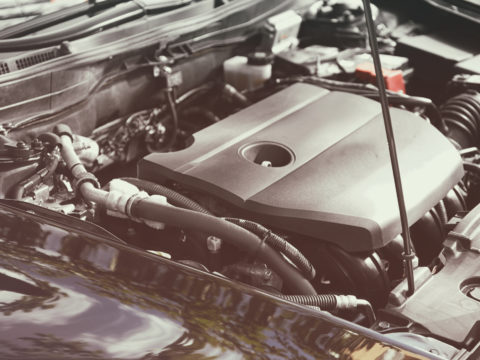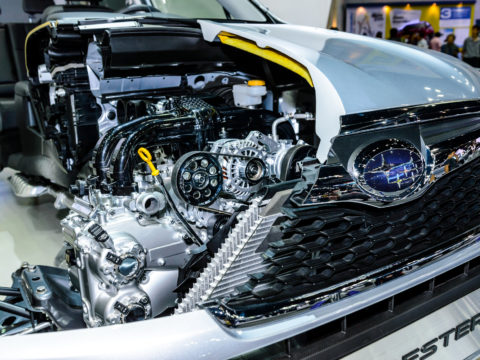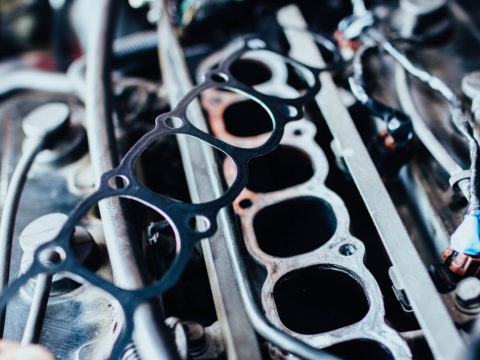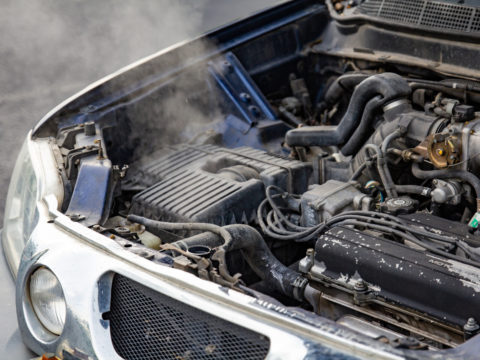When was the last time you changed your oil? If it’s been a while, your engine is at risk. As sludge accumulates in aging oil, it prevents adequate circulation and increases friction on the internal engine parts. Eventually, this damages your engine—and costs you a lot of money in repairs.
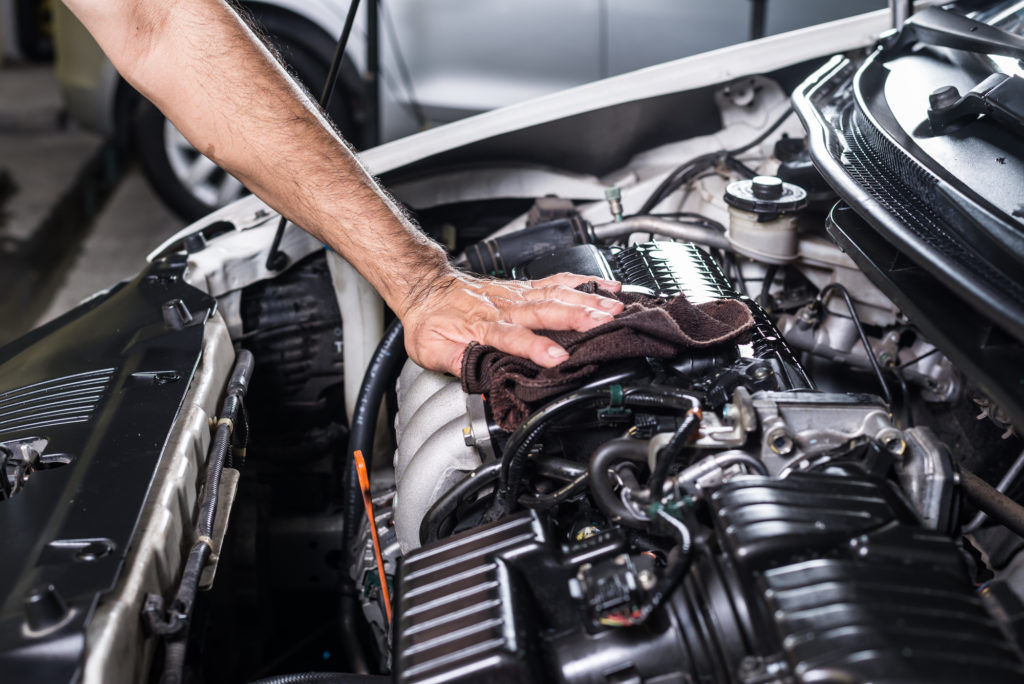
Contents
Why Do You Need an Oil Flush?
An oil flush helps eliminate the sludge accumulated on, around, and inside engine parts. To perform a flush, add the engine flush fluid to old oil before changing it. But how do you know if you need a flush rather than a simple oil change?
Generally speaking, you’ll need a flush if it’s been a long while since you’ve invested in an oil change because all dirty oil will eventually start to develop sludge. And if you change your oil without flushing it first, you will get clean oil but still have the sludge buildup to address. So, it’s best to flush your oil before changing everything.
The only way to see sludge buildup is to inspect your vehicle’s engine yourself visually. Since that’s not something everyone feels comfortable with, you can also check your dashboard to see if the “check engine light” or “oil change” icons are lit up. In any of these cases, your vehicle will likely benefit from an oil flush.
Let’s look at a few other signs.
Signs Your Car Needs an Oil Flush
1. The Engine Has Started Making Noises.
Oil maintains a layer of lubrication between metal parts. If you start hearing a metal-on-metal grinding, knocking, or tapping, then your oil is either too thick and dirty to lubricate properly, or it’s not flowing as it should to keep the parts lubricated. Either way, you’ll want to check your oil ASAP.
2. The Smell of Something Burning.
If you start smelling the telltale scent burning, gas fumes, exhaust, or even just an “oily” smell, then it’s time to get an oil flush and change—immediately.
3. Your Car Is Leaking Dark or Viscous Oil.
Even if you haven’t popped the hood of your car to see what the oil looks like, you can still see if you’re due for an oil change by checking for leaks. Leaks in and of themselves are a cause for an oil change (dirt and particles can enter through cracks in the system), but nonetheless, you need to address the dirty oil in addition to any other repairs.
If you see dark or thick oil collecting beneath your vehicle, then it’s best to prepare for an oil flush and change.
4. Low Oil Pressure.
When gunk and sludge build up inside and around the engine, it can block oil galleries. The blockages can impede or prevent flow to other parts of your engine, leading to low circulating oil pressure.
It can help if you think of this like our circulatory system: Your heart is the engine, and your blood vessels are the oil galleries and channels. If your heart tries to pump blood to an area, but the vessel is blocked, the blood pressure in the rest of your system plummets because there is no fluid to maintain pressure. This situation is catastrophic for the system—your body!
It’s the same with your vehicle: The engine needs to process oil and move it around to keep all the intricate parts functioning. Sludge and gunk can build up, prevent adequate fluid from moving through, and create low pressure across the rest of the system. It will eventually be catastrophic for this system as well, as low oil pressure leads to increased friction and component breakdown.
5. Increased Exhaust.
Clean oil will produce a translucent vapor. As the oil gets dirtier and thicker, the vapor becomes smokier. If your exhaust has started to look like a smokestack, then your oil is dirty, and you probably need a flush and change.
Benefits of Removing Oil Sludge Out of Engine
Now that you know more about oil flushes and changes, let’s talk about the benefits you’ll get from removing oil sludge out of the engine.
1. You Get a Clean Slate.
Once you’ve removed the oil sludge from the engine, you get a clean slate for your vehicle’s health. Be sure to mark down when you performed the oil flush and change, and start creating the habit of good vehicle maintenance from this point forward.
2. Clean Engine Parts Without Hassle.
If you wanted to clean every engine part manually, you would have to tear apart your engine. Doing this is expensive and incredibly time-consuming, not to mention complicated for those who haven’t done it before. A good oil flush will clean internal components without this hassle.
3. New Oil Stays Clean Longer.
Let’s say you chose to just put clean oil in your engine without removing the sludge. Well, that oil will just get dirty as it picks up the old sludge and gunk—and deposits it right back in the engine all over again. If you do a good oil flush, you avoid all of this. Clean oil stays clean for much longer.
4. A Flush Gets Everything the Filter Misses.
A filter catches a lot of the gunk, but it isn’t perfect—residue will continue to build up over time. As long as your filter still has some life left in it, a flush will help it do its job.
5. Increased Longevity All Around.
If you properly maintain your engine and its components, your vehicle will enjoy a longer lifespan all around. You’ll spend less on costly repairs down the line and won’t have to worry about a catastrophic breakdown at an inopportune time.
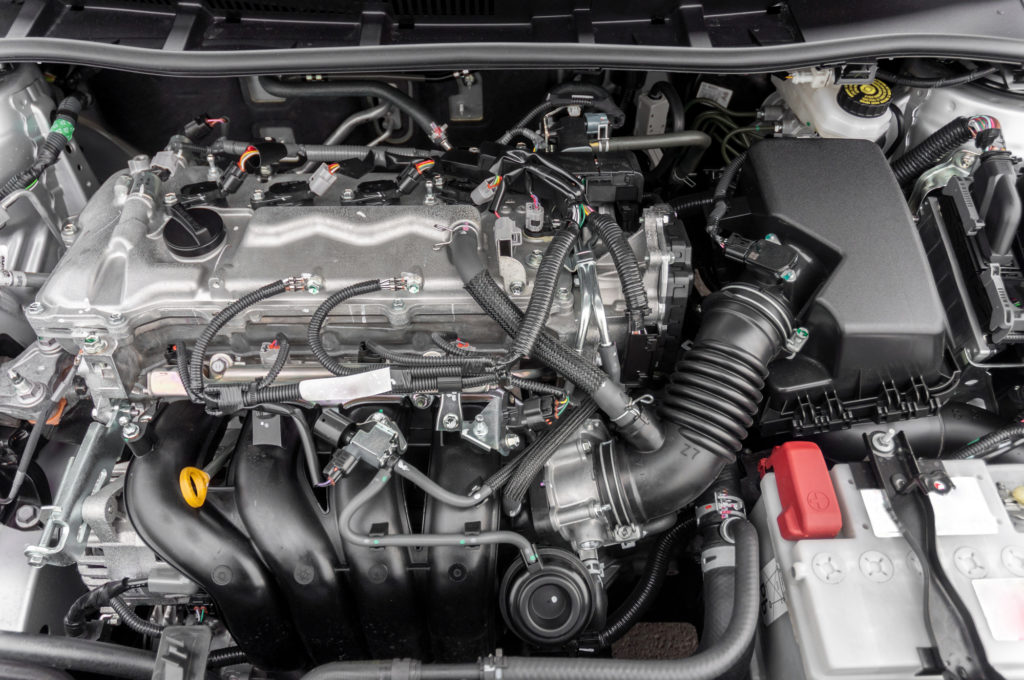
How to Perform an Oil Flush
The Tools and Equipment Needed for This Are:
- Engine flush fluid (try Liqui Moly 2037 Pro-Line Engine Flush or LUBEGARD Engine Flush)
- Quality motor oil (try Mobil 1 Extended Performance for synthetic motor oil or Castrol GTX if you need conventional oil)
- Oil catch pan
- Oil filter
- Oil filter wrench
Step 1: Add the Engine Flush Fluid.
Before starting, ensure your vehicle is parked on level ground in a well-ventilated place and gather your materials.
Next, remove the engine oil cap. Then simply add the engine flush fluid to your engine oil.
Step 2: Idle the Engine.
Once you’ve added the engine flush fluid, replace the oil cap, then start the engine. You’ll need to let it idle for approximately 10-15 minutes to allow all the fluid to mix with the existing motor oil. Allowing it sufficient time to circulate will help it fully break down sludge and gunk lodged in and around engine components.
Step 3: Drain the Old Oil.
As you would with any other oil change, you should now be able to drain the old oil. Turn off the vehicle, put your oil catcher under the engine, and open the drain plug. You’ll likely see a lot of particles and gunk emerge if the engine flush did its job right.
Step 4: Fill With New Oil.
Replace the oil filter and drain cap. Add the new motor oil to the tank as you would with any other oil change. Ensure you fill the oil to the appropriate level. It can help to turn on the car and allow the new motor oil to circulate for a minute before checking the reading.
Step 5: Dispose of Your Waste Properly.
This step is just as important as any other! Don’t forget to dispose of your oil in accordance with your local laws. Before transporting, ensure it is contained, then take it to an auto parts store or municipal recycling facility. You can also refer to Earth911.com.
With regular vehicle maintenance, you can avoid oil sludge buildup in your car. But if you find yourself needing to remove sludge, an oil flush is a great way to get a clean slate. Good luck!

